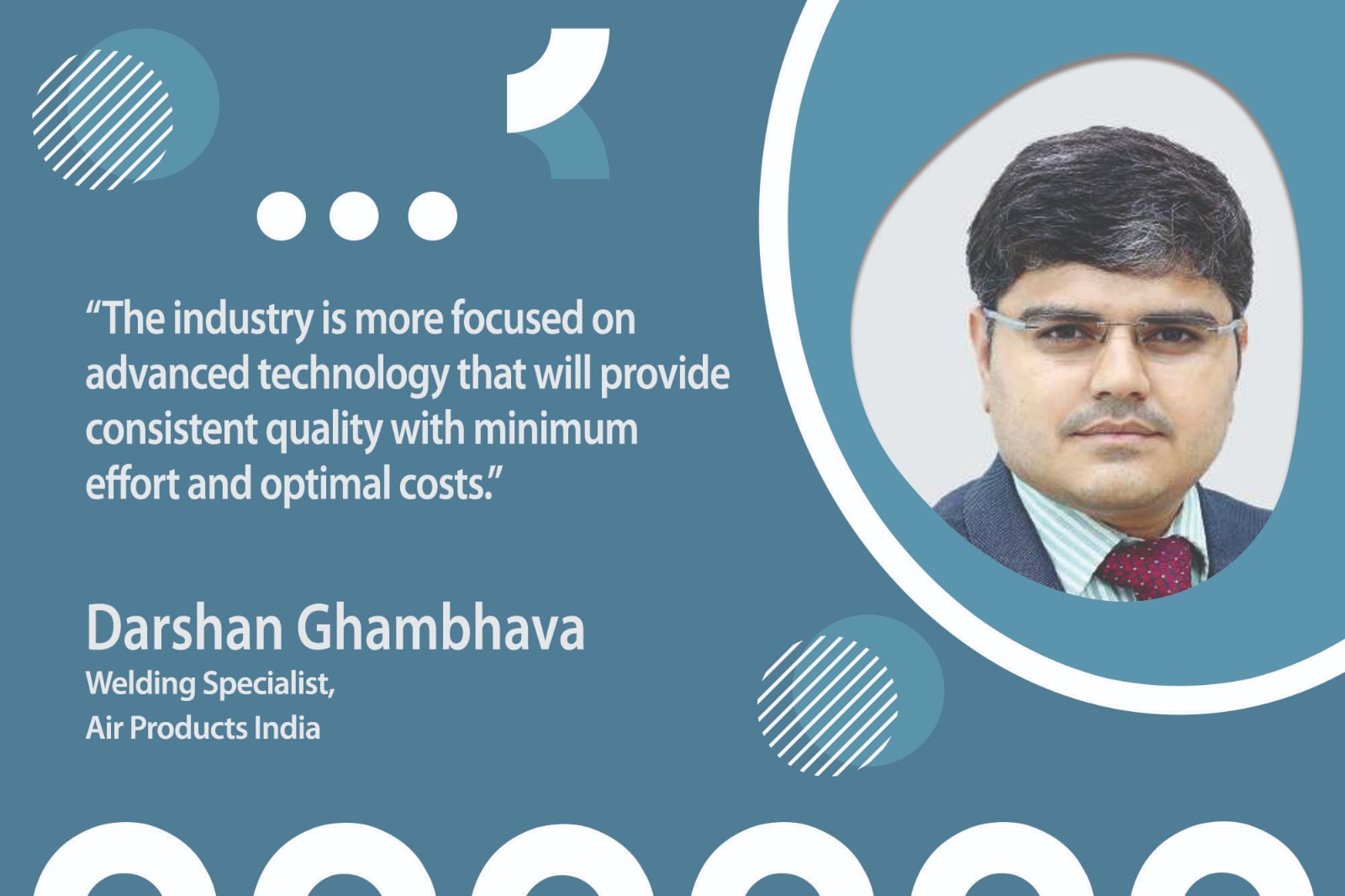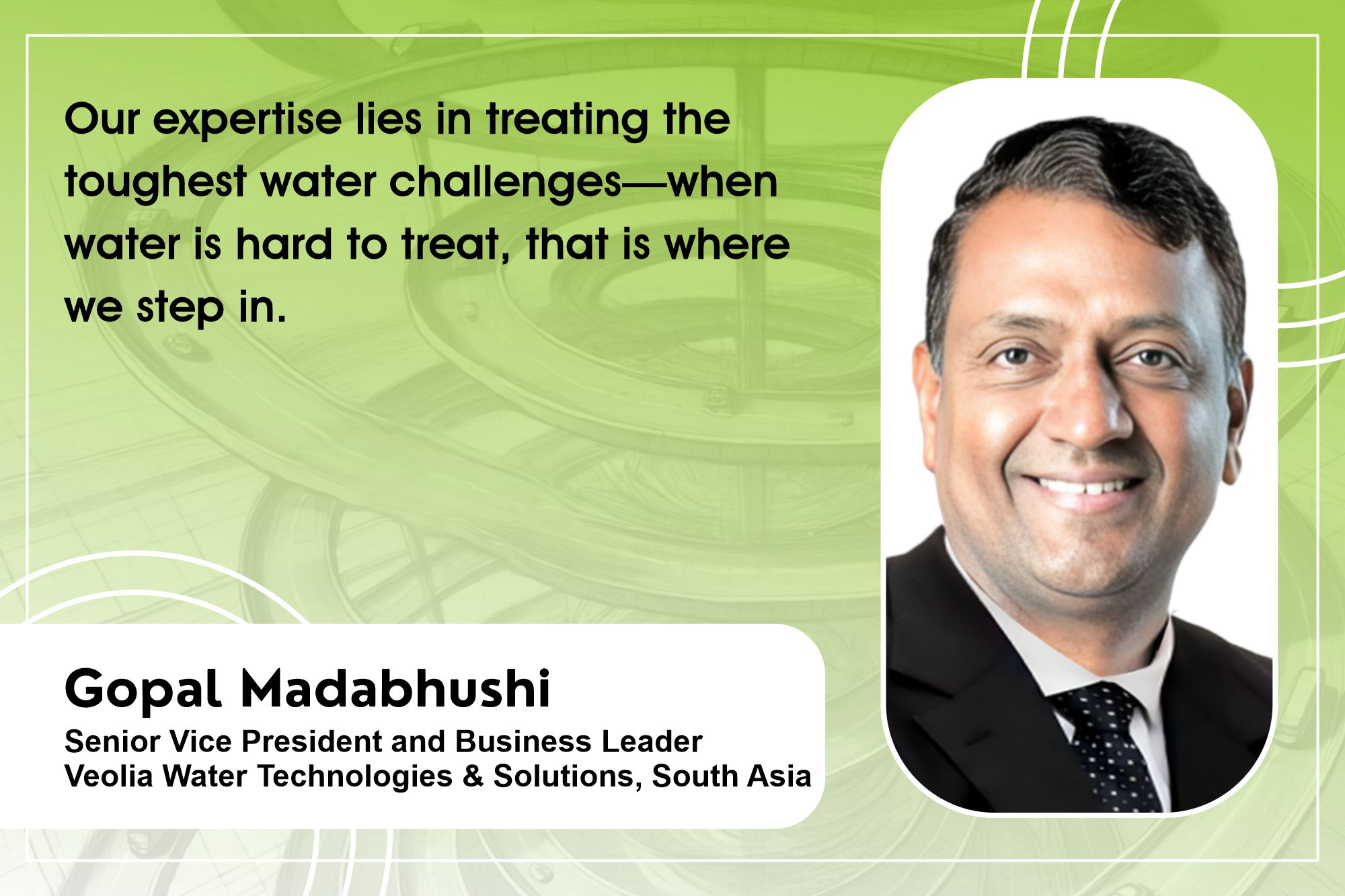Transformative trends in welding for infrastructure
By Edit Team | March 7, 2024 11:28 am SHARE

With a focus on enhancing quality, safety, and efficiency, industrial welding is undergoing a remarkable metamorphosis in tandem with the demands of construction and infrastructure projects. In a comprehensive dialogue, Darshan Ghambhava, Welding and Material Specialist, Air Products India, shares insights into the evolving landscape and pivotal trends driving this transformation.
Given your specialisation in welding engineering, metallurgy, and NDE, how do you see the role of industrial welding evolving in the construction and infrastructure industry?
Industrial welding is the backbone of the construction and infrastructure industry. Welding is pivotal in providing structural integrity and safety in the construction and infrastructure industry. The industry is more focused on advanced technology that will provide consistent quality with minimum effort and optimal costs. These industries have high capital and are looking for cost optimisation without any trade-offs in quality and safety. Now, the industry emphasises automation, the Internet Of Things (IoT), and Artificial Intelligence (AI). Now, we can see more automatic equipment, such as welding robots and cobots, in the industries.
Furthermore, advancements in welding technology, such as friction stir welding and laser beam welding, and additive manufacturing techniques, such as WAAM (Wire Arc Additive Manufacturing), offer opportunities for enhancing the structural integrity and longevity of welded components while reducing environmental impact. As technology advances, we’re shifting towards more sustainable welding practices, energy-efficient processes, and innovative welding techniques, including using less carbon-intensive materials. This includes using renewable energy sources for welding operations, minimising waste through efficient material usage, and implementing recycling programs.
In your experience, how crucial is the role of materials engineering and selection in ensuring the longevity and reliability of welded structures within the industrial setting?
Materials engineering plays a critical role in ensuring the performance and durability of welded structures. By carefully choosing materials with appropriate properties such as strength, corrosion resistance, and thermal stability, we can mitigate risks of premature failure and ensure the structural integrity of welded components. Also, understanding the fabricability and weldability of the material makes components constructable, which is a way to construct a whole plant or structure successfully. Understanding material behaviour under various conditions is essential for making informed decisions throughout welding. In summary, materials engineering is fundamental to the success of welded structures, ensuring they meet performance requirements, withstand environmental challenges, and deliver optimal value over their service life.
Could you elaborate on the key measures and processes you employ to ensure the quality and integrity of welding activities, especially in critical equipment for the construction and infrastructure projects
A systematic multi-face approach is required to ensure the quality and integrity of welding activities. This includes robust and rigorous review and implementation of inspection and testing procedures, adherence to industry standards and codes, comprehensive training of welding personnel (Welding engineers, inspectors, welders, and welding operators), and quality management systems. Non-destructive evaluation (NDE) techniques such as ultrasonic testing, radiographic testing, and visual inspection are also essential for detecting defects and ensuring weld quality. Welding & NDE personnel undergo extensive training and certification to ensure competency in performing welding tasks according to industry standards and specifications. Continuous improvement initiatives, such as root cause analysis, corrective action, and Lesson learned programs, are implemented to address any deviations from quality requirements and prevent the recurrence of issues. In summary, by implementing rigorous procedures, conducting thorough inspections, and maintaining comprehensive documentation, we can ensure that welded components or structures meet or exceed project requirements and industry standards.
Air Products is known for its adherence to various industry standards. Can you share your experiences implementing and ensuring compliance with standards such as ASME codes, ASTM, API, and NACE in welding projects?
Adherence to industry standards and codes is paramount in ensuring project safety, reliability, and compliance. We prioritise compliance with ASME, ASTM, ISO, API, and NACE standards to meet regulatory requirements and customer expectations. This involves thoroughly reviewing project specifications and contractual obligations to identify applicable standards and requirements. Welding procedures and practices are developed and documented by these standards, with regular audits and inspections conducted to verify compliance applicable to all stakeholders. Additionally, collaboration with third-party certification bodies and regulatory agencies ensures independent validation of compliance with industry standards and enhances the credibility of welding operations.
How does meticulous documentation contribute to the success of welding projects in the construction and infrastructure industry?
Comprehensive documentation is essential for maintaining traceability and accountability throughout welding operations. Detailed records of welding procedures, material specifications, inspection results, and certifications provide a transparent audit trail of project activities. This documentation facilitates compliance with regulatory requirements and serves as a valuable reference for future maintenance, repairs, and modifications. Proper documentation management ensures stakeholders access to accurate and up-to-date information, enabling informed decision-making and risk mitigation. Meticulous documentation ensures the integrity, safety, and quality of welding activity in any project.
What trends do you foresee in the industrial welding sector, and how might these impact construction and infrastructure projects in the coming years?
Looking ahead, Welding in the industry will poised to undergo significant transformation driven by technological advancements and market demands. Robotics and automation will continue to evolve welding processes, enabling higher productivity, precision, and consistency in welded fabrications. Collaborative robots (cobots), equipped with advanced sensors and artificial intelligence algorithms, will facilitate human-robot interaction and enhance flexibility in manufacturing environments. Additive manufacturing, or 3D printing, holds promise for revolutionising welding processes by enabling the fabrication of complex geometries and customised components with minimal material waste. Digitalisation will significantly facilitate real-time monitoring, data analysis, and predictive maintenance to optimise welding operations and enhance overall project outcomes. Furthermore, integrating digital twin technology will enable virtual simulation and optimisation of welding processes, reducing time-to-market and improving product quality. Overall, these trends will shape the future of industrial welding, driving innovation, sustainability, and competitiveness in the construction and infrastructure industry.
Cookie Consent
We use cookies to personalize your experience. By continuing to visit this website you agree to our Terms & Conditions, Privacy Policy and Cookie Policy.





































-20240213125207.png)

























